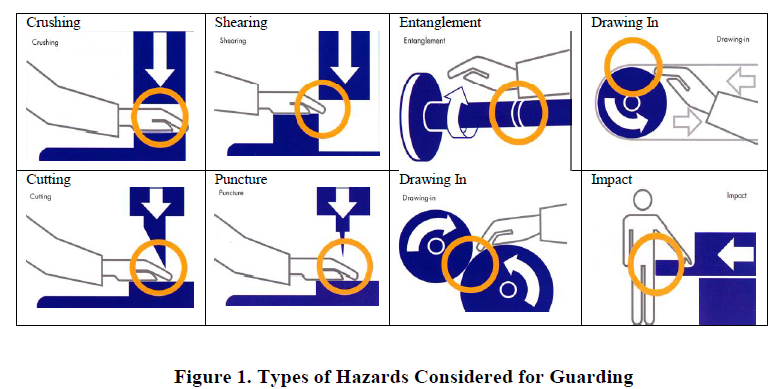What Requires a Guard or Safety Measure?
Guards are used to prevent contact with portions of a machine that could
present a hazard (see Figure 1) to the user. The user is any person interacting with the machine from the initial assembly through the decommissioning of the machine at the end of its useful life. Portions of a
machine that could present a hazard include any feature that can pinch, shear, crush, impact, entangle, burn, or otherwise cause harm to a person (ANSI B15 3.2). Rotating shafts can be excluded if they are smooth, with the shaft extension ¼ of the shaft’s diameter, based on EN requirements). “Smooth” means free of keys, keyways, set screws, or any other feature outside the normal geometry of the shaft. This applies to all rotating elements including bearings.
The Preferred Path for eliminating hazardous conditions is to eliminate the hazard through improved design.

The best guard design has zero parts. This implies that the hazard is designed out or the guarding feature is integrated into the design of the function of the machine. With guards designed into the machine function, it is required that the guard permit the machine to function and that operation without the guard is impossible.
